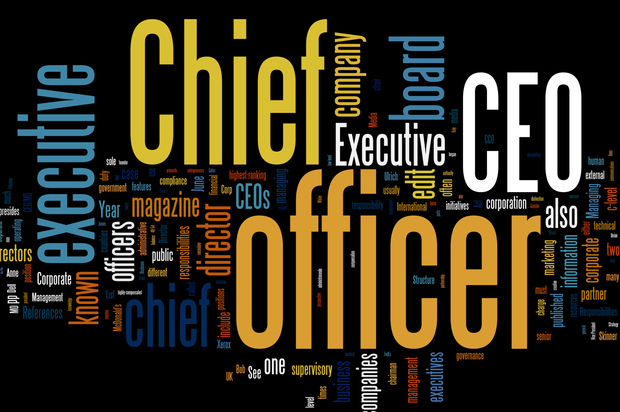Some leaders have it through. Others not yet. To truly embrace agile as an organization, managers will have to work differently. That is a lot harder than it seems. The behavior with which they have earned high positions within the company is not the behavior that fits agile. And unlearning what has been successful in the past is not easy. This article discusses the four things that leaders do who successfully make the transition to agile.
Much is at stake. Complete companies, or complete divisions of companies, invest huge amounts in transformation programs hoping for the big advantages of agile, such as more speed, higher quality, lower costs and more customer orientation. But if the management does not adjust its behavior, they limit the impact of all these efforts and expenses.
It is not a one-size-fits-all when it comes to agile leadership. Yet we see leaders who successfully make the transition to agile structurally doing four things.
Prioritize
They prioritize their efforts and focus on a small number of agile habits that are most important to themselves and their organizations. The agile theory includes a whole set of agile habits. Selecting the habits that are most urgent in a specific situation requires self-knowledge and a good feeling for what is happening within the company. In order to align the organization, it is important that the management can clearly explain the priorities, in such a way that everyone recognizes them and is able to do something with them in their daily work. A European financial institution that succeeded in making its entire organization work agile, for example, described the priorities for management as follows:
- Openness. Be open to feedback on your behavior and your actions.
- Trust. Join the idea that not everything is planned in advance. Discover the right direction through trial-and-error.
- Collaboration. Strive for the highest possible for the entire company. That does not always have to be the best for a specific business unit.
- No ego. Make sure that you as a whole organization speak with one voice.
- Transparency. Talk to people if they do not want to change or do not show the new behavior.
- Responsibility. Keep each other accountable for the progress.
The CEO of a US bank told his top managers: go for results, adjust, let people bring out the best in themselves, speak out, and commit yourself to the success of the company, not to the success of your department.
Role model
They act as role models for the desired behavioral change. It is much easier to tell what needs to be different than to commit yourself to new behavior. The most effective agile leaders have committed themselves to daily ‘workouts’ in which, in the presence of colleagues and team members, they go through the individual and management team action plans. It explicitly states how leaders return the new behavior in their work and routines, what and how they communicate, and how they involve the rest of the organization. These plans are very specific, for example: ‘From now on, I leave the decisions to the people on the shop floor, I cancel meetings and instead I take part in stand-ups on a daily or weekly basis to see how I can help my teams. ‘
At the European financial institution we mentioned earlier, all members of the board of directors have committed themselves to weekly town halls in the company restaurant. There they presented a general company update and answered questions. But they also told about their personal development agenda. With that they made their personal commitment to their own behavioral change publicly very insightful and tangible.
Empowerment
They empower themselves, each other and their teams. Effective leaders recognize that behavioral change does not just happen. Only wanting is not enough. They seek help to reflect and build new competences, for example in the form of coaching or feedback. They do not see asking for help as a sign of weakness. They understand that they only achieve results if they really invest in it. Being cautious and spending time in changing personal and collective habits is exactly that: investing to become a better agile leader.
Effective leaders recognize that others need help and often act as coach for their teams. Coaching is a very different role than the role they are used to: that of decision-maker. And while helping others adjust their behavior, they also reinforce these new habits.
One of the most difficult agile habits, especially for those who have grown up in a risk-averse and hierarchical organization, is to leave decisions to the employees who are closest to the processes and the customers. Ultimately this is the essence of empowerment. But that does not make it easy. A senior executive of a global car manufacturer says: “Letting go is the hardest thing. It is just like with raising children: you have to decide when to release them and when to tell them what to do. “
At the same time, good leaders promote transparency and responsibility. If they empower their teams and give more responsibilities, they also expect more transparency. An executive from another European bank says: “To give teams more room, discipline is necessary. But the short-cycle structure and the other safety nets that agile offers help. “
New behavior
They celebrate and reward new behavior. agile leaders are constantly confronted with the challenges of change management: encouraging, strengthening and demonstrating habits that are new to most organizations. Habits such as working towards minimum viable products to test a hypothesis about the end product, stimulating experimental work (even if it probably does not work out the first time), and celebrating failures as opportunities to learn from. agile leaders must adjust the way in which they celebrate success.
This also includes the supporting processes, such as performance management, in order to reward the right behavior. They must also be prepared to make difficult choices, to say goodbye to loyal managers and top performers if they do not show the behavior with which the company can be successful in the future.


